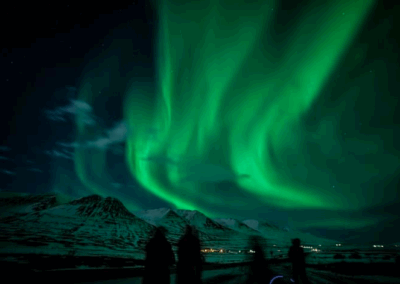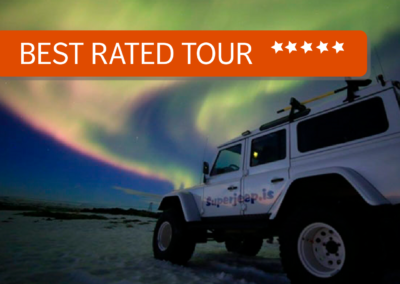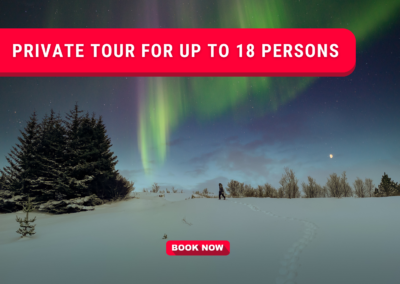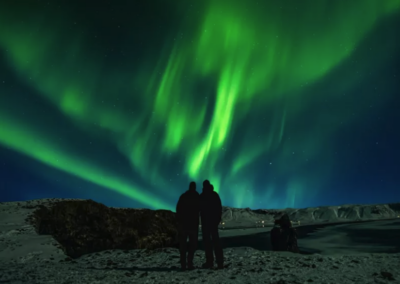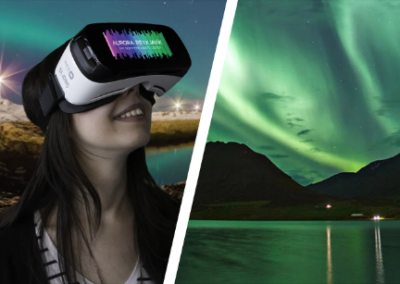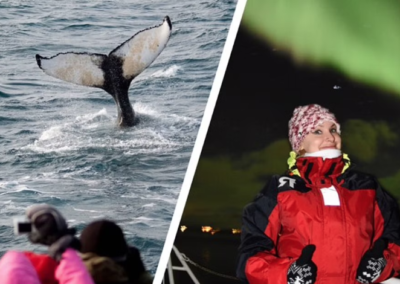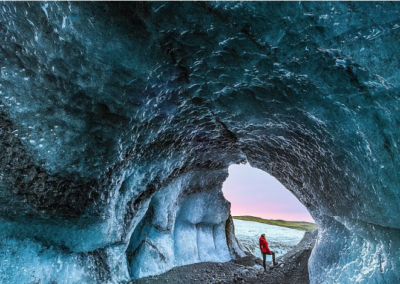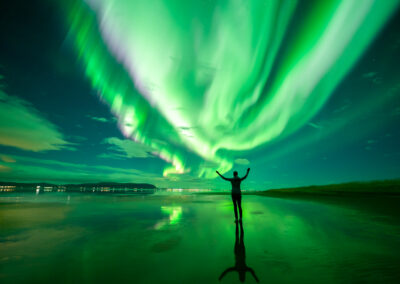The 25 Best places to see the northern lights in Iceland
As photographers and northern lights chasers from Aurora Reykjavík, we’ve spent countless nights under Iceland’s incredible skies. With years of experience, we know the best places to catch the auroras. And how to have fun while doing it!
Whether you’re heading out for a solo adventure or joining a tour, we’re here to share our favorite spots to watch the northern lights. Spoiler alert: there’s no single “best place” to see them because the lights can pop up anywhere!
That said, some spots are more scenic or easier to reach than others, so we’re breaking down 25 of our top picks.
Let’s dive into our favorite northern lights locations and throw in some safety tips to keep you warm and cozy on your adventure. And hey, if you’re not up for the DIY route, we’ve got you covered with guided tours. Because sometimes it’s nice to just sit back and enjoy the show.
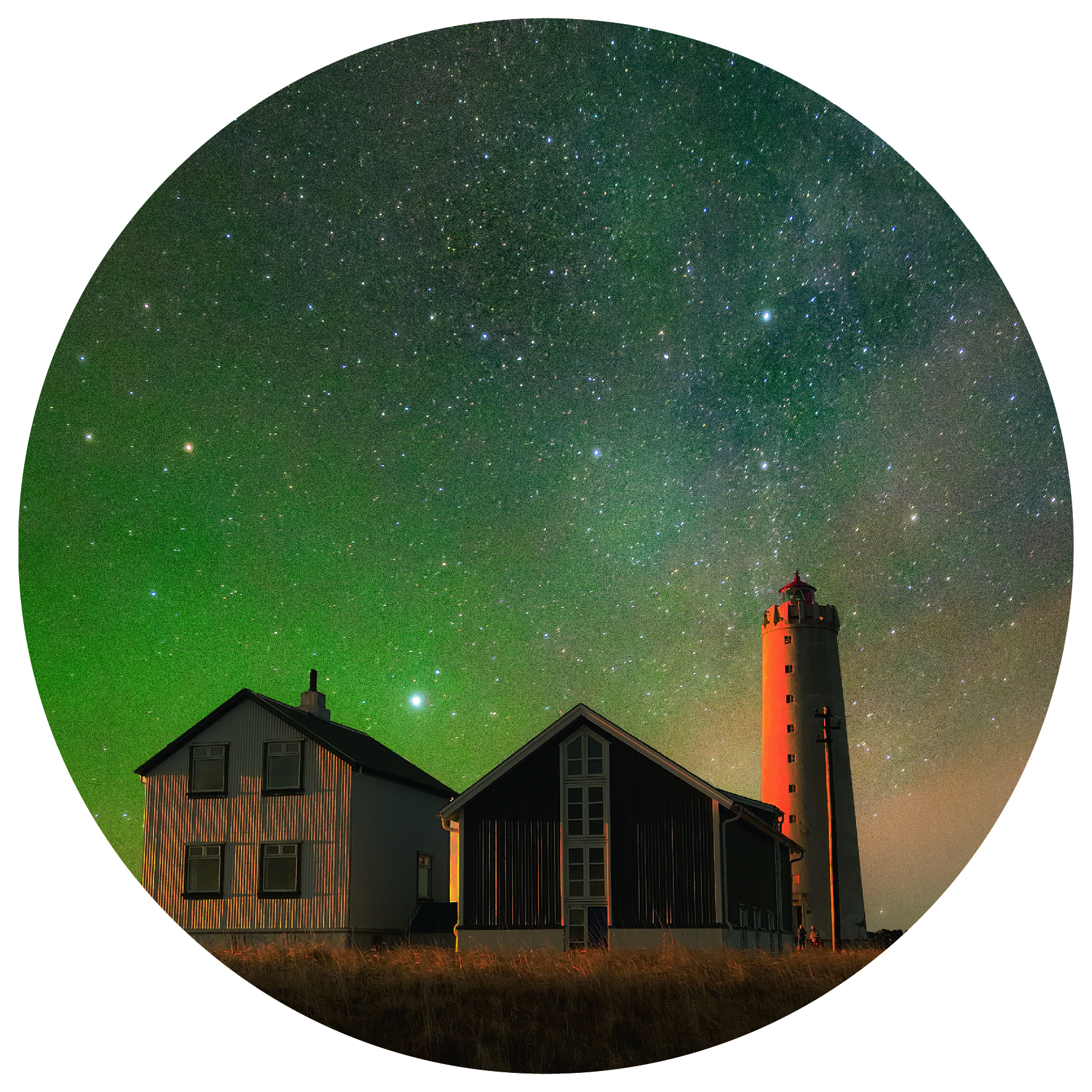
1. Grótta Lighthouse: One step outside of Reykjavik!
Too comfy in Reykjavik to venture far? No worries. Grótta Lighthouse is just outside the city and offers great views of the auroras over the ocean — perfect for a quick lights chase. Located at the Seltjarnarnes Peninsula, this spot is one of the darkest inside the capital area
Here, you will automatically face North if you observe the lighthouse. This is the direction where the lights usually occur from.
Pro Tips
- Arrive Early for Best Positioning: Grótta is popular, especially during aurora season. Arriving early lets you secure the best spots, particularly if you want to include the iconic Grótta lighthouse as a foreground element. This helps frame the Northern Lights beautifully, adding structure to your composition.
- Tide Awareness: Check the tide schedule before heading out. Grótta is surrounded by water, and at high tide, some of the pathways can be inaccessible. Don’t get stuck on the island!
- Settings for Northern Lights: Use a tripod and set your exposure between 5-20 seconds, depending on aurora intensity. A wide-angle lens is ideal, allowing you to capture both the lights and the expansive coastal landscape. Also, keep your ISO between 1600-3200, adjusting for the aurora’s brightness and the surrounding darkness.
- Foreground Interest with the Lighthouse: Including Grótta lighthouse in your shot adds a sense of place and scale, creating a captivating focal point against the dancing lights. Use the lighthouse to frame your photo or as a silhouette to emphasize the vibrant sky.
- Capture Reflections in Pools: If the tide is low, look for shallow pools along the beach that can mirror the auroras. As these reflections add a layer of depth and visual interest, the lights appear even more magical.
2. Garður Lighthouse: As far as you can go!
Garður Lighthouse is located on the western tip of the Vatnsnes Peninsula in Iceland. Far from city lights and with expansive views of the night sky over the North Atlantic, this is a hidden gem for Northern Lights enthusiasts. With its unique circular shape and vibrant red-and-white design, the lighthouse provides a stunning foreground for aurora photography. This remote spot’s open horizon and dramatic seascapes make it a magical location to witness the Northern Lights dancing across the sky.

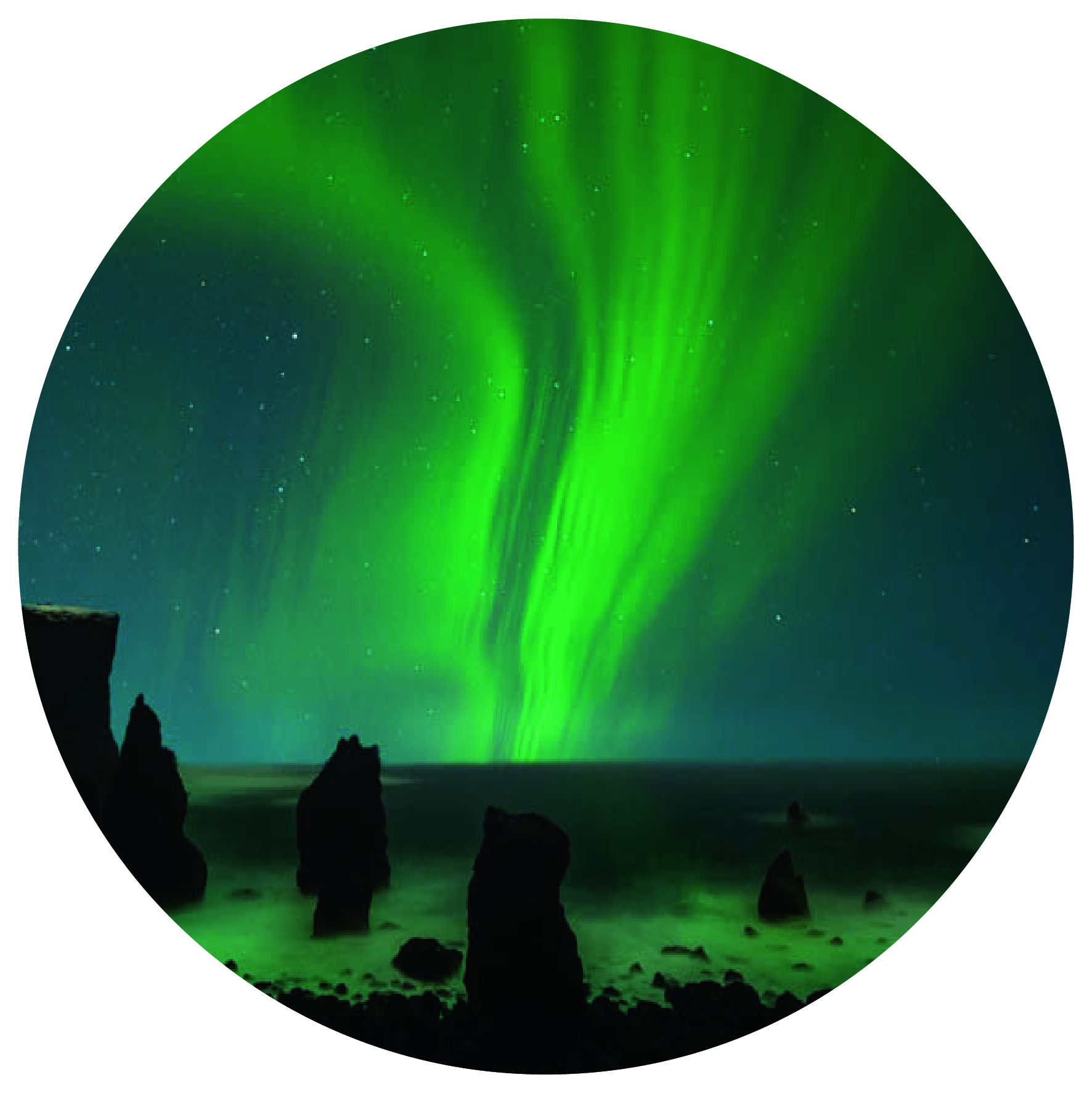
3. Reykjanesviti Cliffs: Nature at its most raw!
Reykjanesviti, Iceland’s oldest lighthouse, stands proudly on the Reykjanes Peninsula.
The building is surrounded by rugged cliffs, volcanic landscapes, and geothermal hot springs. Just offshore, dramatic sea stacks rise from the ocean, adding a striking element to the scene. At this unique spot, can be found unobstructed views over the North Atlantic, perfect for Northern Lights enthusiasts. The auroras dancing over the lighthouse, with the sea stacks silhouetted against the vibrant sky, create a mesmerizing and unforgettable experience. Reykjanesviti is truly an ideal destination for those seeking a scenic and secluded spot to witness the magic of the Northern Lights.
4. Blue Lagoon: Combine comfort and beauty!
The Blue Lagoon’s freely accessible overflow, located just outside the main resort, is a hidden gem for Northern Lights photography. While it’s not for bathing — the water is cold, and entry is forbidden — this spot offers a perfect setup for capturing the auroras. First visitors can enjoy a soak in the warm Blue Lagoon, then step out to take in the Northern Lights without the crowds. With its reflective, mineral-rich waters and dark surroundings, this location provides an incredible backdrop for photographing the auroras in Iceland’s stunning landscape.
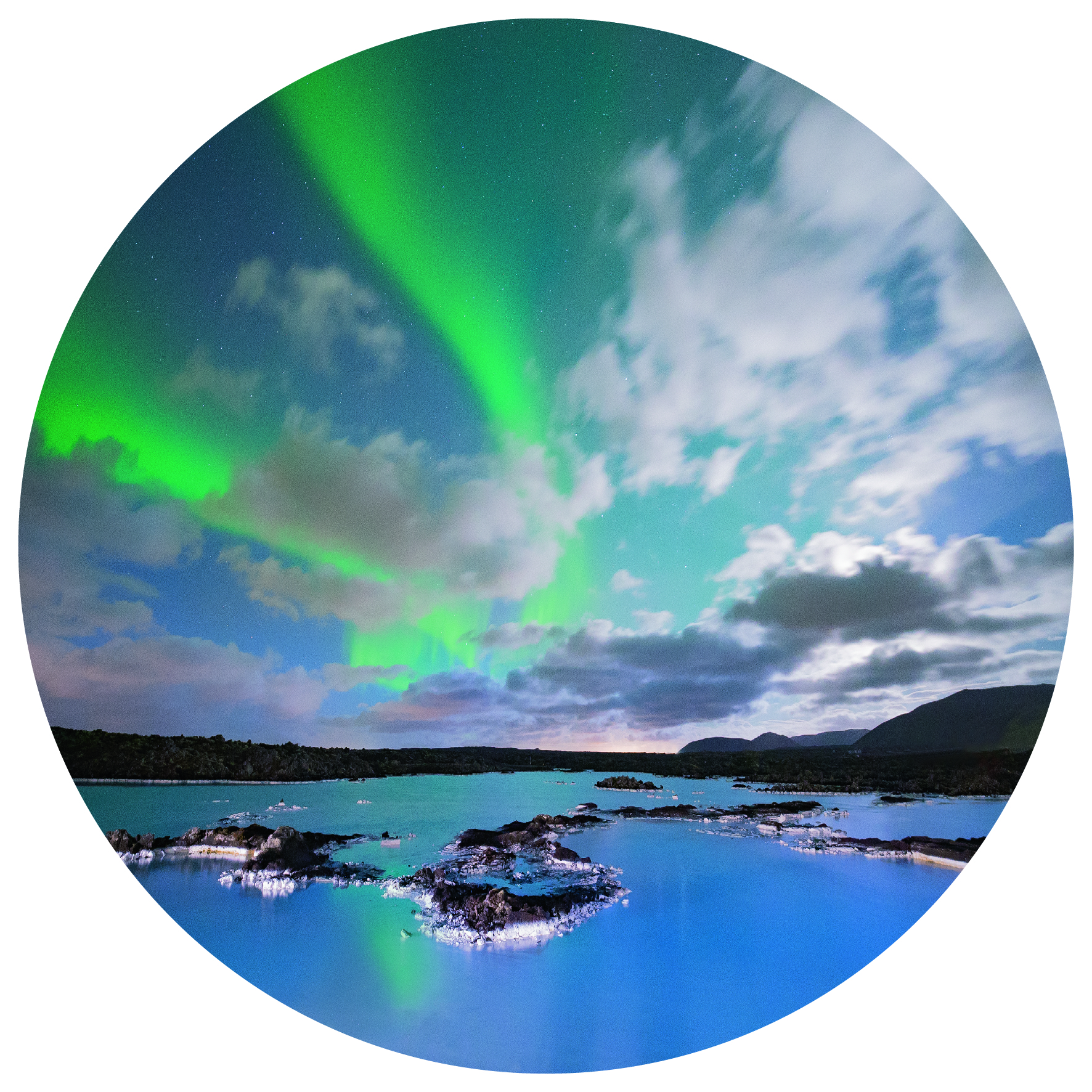

5. Kleifarvatn Lake: Let the calm inspire you!
Kleifarvatn, located on the Reykjanes Peninsula, is just 30 minutes from Reykjavik. This is considered one of the most serene spots to witness the northern lights in Iceland. In fact, its remote location and lack of light pollution make it a perfect aurora viewing destination. Surrounded by volcanic landscapes and still waters, the reflections of the northern lights on the lake create a magical experience.
There are several small parking lots along the road, with different view points.
6. Þingvellir National Park: See the lights between the continents!
If you want wide-open skies and stunning landscapes, Þingvellir’s got you covered. Just an hour from Reykjavik, it’s one of our go-to spots for catching the lights. Furthermore, it’s super easy to get to. Countless scenic photography option, easy parking and good road conditions even in deep winter. Our National Park a perfect spot for aurora chasers. Clear skies in that area? You’ll find us there!


7. Gullfoss Waterfall: A true adventure!
Gullfoss, one of Iceland’s most iconic waterfalls, is a must-see stop along the Golden Circle route. Cascading in two dramatic stages into a rugged canyon, Gullfoss offers breathtaking views year-round. During winter, its surrounding landscape transforms into a snowy wonderland, making it an extraordinary location to witness the Northern Lights. As the auroras dance above, the waterfall’s misty spray and icy formations reflect the vivid colors, creating a magical, otherworldly scene. Gullfoss’s accessibility and powerful natural beauty make it an ideal destination for anyone exploring Iceland’s Golden Circle and hoping to catch a glimpse of the Northern Lights. Just keep in mind that there’s often wind and a lot of spray from the waterfall – take a lens cleaning cloth with you and dress very well.
8. Geysir Geothermal Area: Double the surprise, double the fun!
For photographers, Geysir offers endless opportunities to capture Iceland’s raw power and beauty, especially with a bit of patience and the right timing.
Here are some tips to make the most of your visit:
- Positioning is Key: Arrive early to scout out the best angles. Stand slightly off-center to avoid getting splashed when Strokkur erupts, and choose a spot that gives you a good view of the surrounding landscape for added depth in your shots.
- Know the Timing: Strokkur erupts roughly every 5-10 minutes, so keep your camera ready. Use a fast shutter speed to freeze the explosive moment or slow it down for a softer, mistier effect, especially in lower light.
- Capturing Northern Lights: If you’re photographing the auroras, a tripod is essential. Set your exposure between 5-15 seconds, depending on the light intensity, and adjust your ISO to capture enough detail without too much noise.
- Consider the Foreground: The pools around Strokkur reflect the Northern Lights beautifully. Try positioning the geyser as your focal point and use the reflections as an added element, or focus on the bubbling hot springs for an atmospheric effect.
- Geysir isn’t just about capturing the perfect photo; it’s about embracing the moment, the anticipation of the eruption, and the dance of light and water. With a bit of patience and creativity, you’ll walk away with images that capture the soul of Iceland.


9. Seljalandsfoss Waterfall: Capture the magic of Iceland!
Photographing Seljalandsfoss under the Northern Lights is a rare experience that requires patience and a bit of luck, but when the conditions align, the result is pure magic.
Pro Tips:
- Timing with Solar Activity: Seljalandsfoss faces west, which means you’ll need strong solar activity to catch the Northern Lights in the right spot.
- Finding the Best Angle: One of the most magical shots is from behind the waterfall, but it can get slippery and wet, especially at night. It’s better to walk a bit further away along the road, to get the full waterfall, but also leave enough space for the sky.
- Foreground Elements: The spray from the falls adds a beautiful, misty quality to your shots. Experiment with compositions using the water as your foreground and the auroras as the backdrop. This layered effect can create a truly dynamic image.
- Protect Your Gear: Be prepared for the spray—it can fog up your lens and make for a slippery walk behind the falls. Bring lens cloths and protective covers, especially if you’re trying for shots from behind.
- Get Creative with Light: Try including a soft light source, like a headlamp or low-output flashlight, to gently illuminate parts of the foreground. This can add depth to your photo, highlighting details in the rocks and water without overpowering the natural light from the auroras. Seljalandsfoss itself is illuminated at night, making it tricky for close-ups, unless you stack images with different exposure times.
10. Eyjafjallajökull Volcano: The best that Iceland has to offers!
Eyjafjallajökull is an iconic and dramatic location for photographers, blending Iceland’s wild volcanic energy with its icy landscapes. Known for its 2010 eruption that captivated the world, this glacier-covered volcano is a powerful reminder of Iceland’s natural force and beauty, and under the Northern Lights, it becomes a surreal spectacle.
Here are some tips for capturing its magic:
- Check Aurora and Weather Forecasts: The glacier sits at high elevation and can often be shrouded in clouds or mist. For aurora photography, you’ll need clear skies and moderate to high solar activity for the Northern Lights to be visible over the glacier.
- Find a Vantage Point: Eyjafjallajökull is vast, so finding a spot with an open view is essential. Look for higher ground nearby or fields in the surrounding area for a perspective that lets you capture both the glacier and the night sky. A wide-angle lens is ideal here to include both the expansive landscape and the auroras.
- Adjust for Darkness: The glacier and surrounding terrain can be quite dark at night. Use a tripod and set a long exposure—around 10-25 seconds—to capture detail in the glacier and sky. Keep your ISO between 1600-3200 and experiment with aperture settings to balance sharpness and light.
- Include Foreground Elements: If possible, incorporate some foreground elements like the rolling hills or even local landmarks such as the Þórsmörk valley, adding depth to your composition. The layers of land, glacier, and auroras create a powerful visual story.
- Be Prepared for Harsh Conditions: Iceland’s weather can be extreme around Eyjafjallajökull, especially at night. Bring protective covers for your gear and warm clothing for yourself. Strong winds and icy conditions can be common here, so be prepared to adapt quickly.
- Timing with Moonlight: If the Northern Lights are strong and the moon is out, the moonlight can illuminate Eyjafjallajökull, creating a striking contrast with the vibrant auroras above. This added light can bring out the glacier’s textures and add a subtle glow to the landscape.
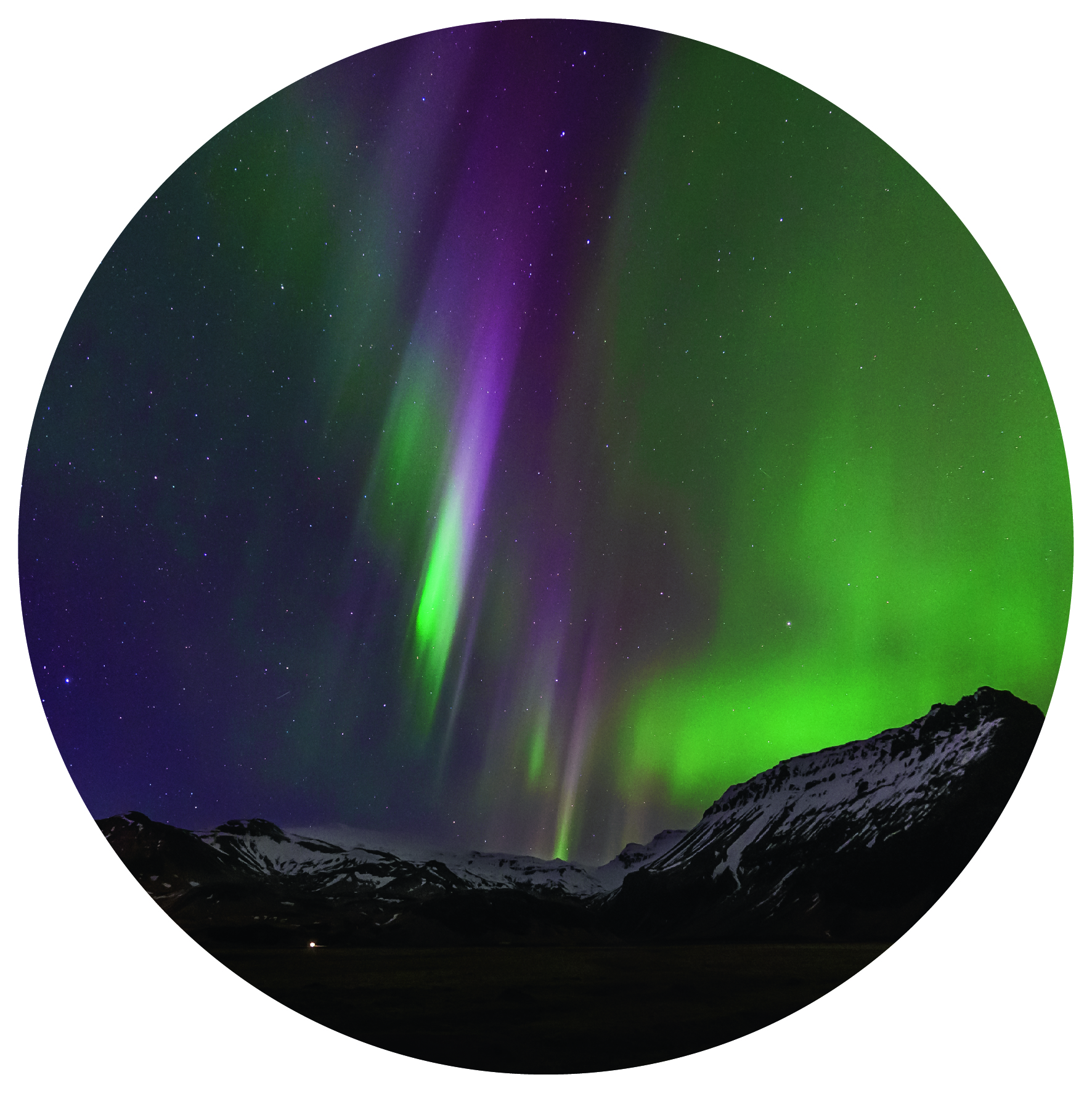

11. Skógafoss Waterfall: Pure Icelandic beauty!
Skógafoss is one of Iceland’s most iconic waterfalls, and its dramatic beauty under the Northern Lights creates an experience that’s nothing short of magical. The mist from the waterfall can create a mystical atmosphere, especially when the lights dance above it, forming a stunning contrast against the dark sky.
Pro tips:
- Capture the aurora framed by the waterfall for an awe-inspiring combination of natural phenomena.
- Use a wide-angle lens to capture the full grandeur of the falls and the sky above.
- Consider shooting from the base of the waterfall for a dramatic foreground.
- The mist from the waterfall can make for some interesting long-exposure shots, where the lights reflect off the spray.
12. Reynisfjara Beach: Add some thrill to your aurora hunt!
Reynisfjara is Iceland’s most famous black sand beach, and its otherworldly atmosphere under the aurora makes it unforgettable. The dramatic basalt columns and Reynisdrangar sea stacks rising from the sea create striking silhouettes against the shimmering lights. The beach’s remote location and the absence of artificial light make it an excellent spot for aurora viewing.
Photography Tips:
- Use the basalt columns as foreground elements to frame the aurora.
- Capture the aurora’s reflections on the wet black sand after the tide recedes.
- A sturdy tripod is essential to combat the strong coastal winds during long exposures.
Accessibility:
Reynisfjara is accessible year-round, but always exercise caution as sneaker waves can occur. Stay at least 30 meters from the waterline.


13. Kerlingarfjöll: Auroras and steam, the perfect combination!
Kerlingarfjöll is a geothermal wonderland with steaming vents, colorful rhyolite mountains, and surreal landscapes. In the right conditions, the steam rising from the earth creates a magical foreground for the aurora. However, due to its highland location and rough terrain, Kerlingarfjöll is often inaccessible during the dark winter months.
Pro tips:
- Capture the contrast between the glowing aurora and the steaming geothermal vents.
- A wide-angle lens will help include the dramatic landscape and sky.
- Plan your visit for early autumn or late spring when the highland roads are passable.
Accessibility:
Kerlingarfjöll is typically accessible from late June to early September. Roads may require a 4×4 vehicle.
14. Jökulsárlón Glacier Lagoon: We put the ice in Iceland!
Jökulsárlón is one of Iceland’s most breathtaking natural wonders, and its surreal beauty is even more enchanting under the Northern Lights. The glacial lagoon, filled with floating icebergs, reflects the aurora in its still waters, creating a dreamlike scene. The icebergs themselves often have a striking blue hue, which intensifies the aurora’s green and pink colors, making for an otherworldly sight.
Photography Tips:
- Capture the Northern Lights as they reflect off the calm waters of the lagoon for a stunning mirrored effect.
- Use the floating icebergs as foreground elements to add scale and drama to your shots.
- For a unique perspective, shoot from various spots along the shoreline for different angles of the aurora and ice.

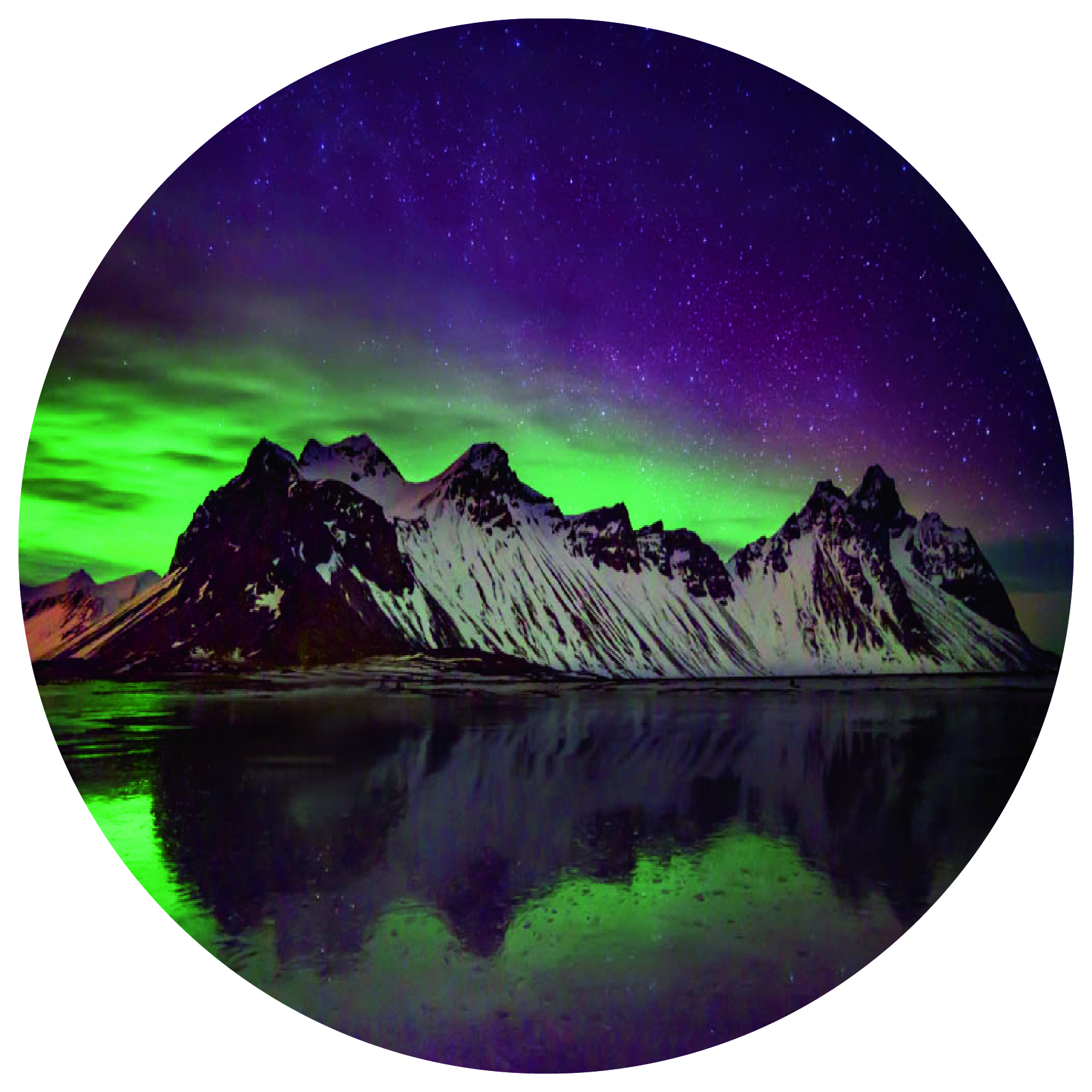
15. Vestrahorn: Capture the wall of light!
Vestrahorn is one of Iceland’s most stunning and photogenic locations. Located on the Stokksnes Peninsula in southeast Iceland, Vestrahorn offers an impressive landscape of towering mountains, black sand dunes, and the surrounding ocean, all of which create a breathtaking backdrop for the aurora. When the Northern Lights appear over Vestrahorn, they reflect off the wet sand and shallow tidal pools, creating a mesmerizing mirror effect that is perfect for photography.
Photography Tips:
- Use the black sand dunes and shallow tidal pools in the foreground to create stunning reflections of the aurora and the Vestrahorn peaks.
- A wide-angle lens is essential to capture both the Northern Lights and the towering mountains in a single shot.
- For dramatic results, shoot during low tide when the reflections on the wet sand are more pronounced.
- Be mindful of the coastal winds, especially in winter, and dress warmly when waiting for the lights to appear.
16. Arctic Henge: as North as possible!

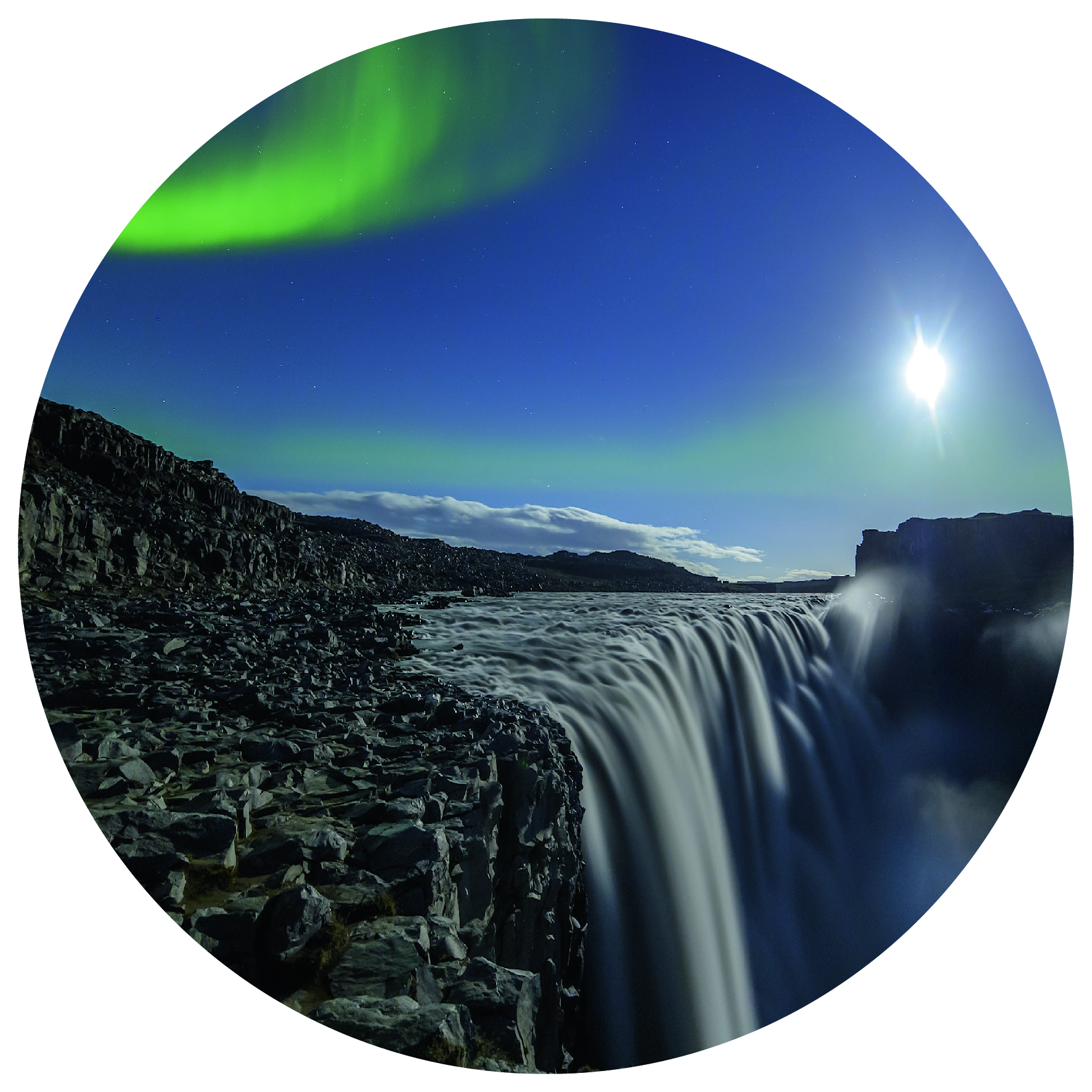
17. Dettifoss Waterfall: Take the opportunity when you can!
Dettifoss, Europe’s most powerful waterfall, offers a raw and dramatic setting for aurora photography. The thunderous cascade creates an unforgettable atmosphere, but this location is highly weather-dependent. In winter, icy roads and heavy snowfall often make Dettifoss inaccessible.
Pro tips:
- Position yourself at a distance to capture the entire waterfall under the aurora.
- Long exposures will soften the water’s movement while emphasizing the aurora’s brightness.
- Use waterproof gear to protect your equipment from mist and spray.
Accessibility:
Dettifoss is typically accessible in the summer months. During winter, the roads are often closed due to snow and ice.
18. Aldeyarfoss Waterfall: The effort is worth it!
Aldeyjarfoss is a hidden gem in North Iceland, known for its striking basalt column formations framing a powerful waterfall. This location provides a unique and rugged setting for aurora photography. However, it can be challenging to reach during the winter months, as the highland roads leading to the waterfall are often impassable.
Photography Tips:
- Frame the waterfall with the basalt columns and aurora for a dynamic composition.
- Shoot long exposures to blur the water’s motion while keeping the aurora crisp.
- Wear crampons to navigate icy trails safely during autumn or early winter.
Accessibility:
Best visited in summer or autumn before heavy snowfall blocks access. A 4×4 vehicle is recommended.

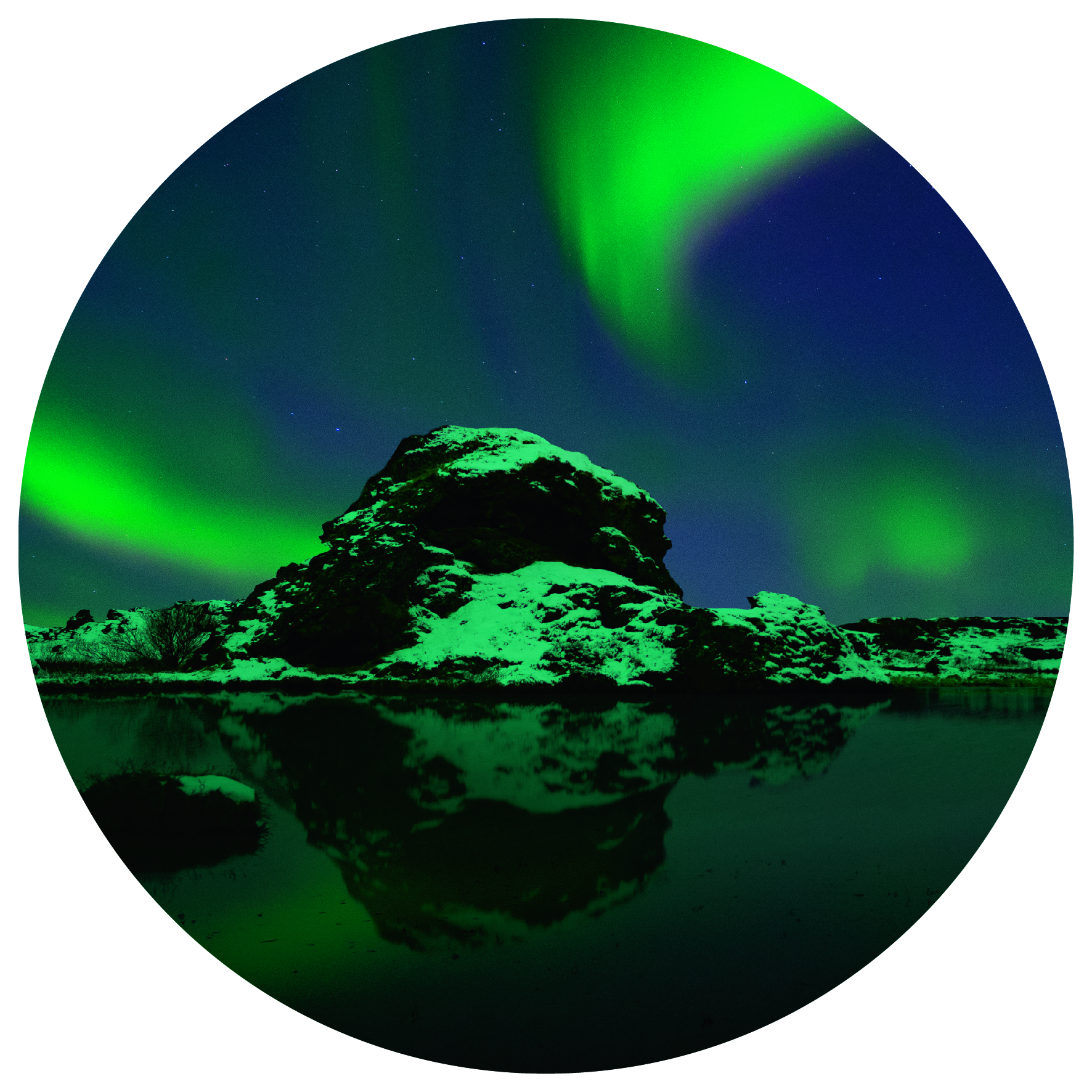
19. Lake Mývatn: See it to believe it!
Lake Mývatn is a tranquil and scenic spot surrounded by volcanic landscapes and geothermal activity. The lake’s calm waters often reflect the aurora, creating stunning symmetrical images. The minimal light pollution in the area makes it ideal for aurora watching.
Photography Tips:
- Focus on reflections in the lake’s still surface for a dramatic effect.
- Use the pseudocraters or lava formations as foreground elements.
- Scout locations during daylight to find the perfect vantage point for unobstructed views.
Accessibility:
Lake Mývatn is accessible year-round, but icy roads in winter may require caution.
20. Goðafoss Waterfall: Get close to Valhalla!


21. Hraundrangar Peak: Be swept away by Iceland’s magic!
Hraundrangar, a jagged volcanic peak rising sharply from the landscape, is a striking subject under the aurora. Its unique silhouette against the shimmering sky creates a scene reminiscent of fantasy landscapes. The remote location ensures minimal interference from artificial light.
Pro Tips:
- Use the peak as the central element, creating a dramatic focal point.
- Include foreground elements such as snow-covered rocks or vegetation to add depth.
- Experiment with longer exposures to capture aurora motion and surrounding stars.
Accessibility:
Hraundrangar is accessible year-round, but winter conditions may require careful navigation of icy roads.
22. Hvítserkur: Are you ready to face the Troll?
Hvítserkur, the “Troll of the North,” is a dramatic basalt sea stack rising from the waters off Iceland’s northwestern coast. This unique formation provides a perfect silhouette under the aurora, with its reflection adding to the scene’s beauty.
Photography Tips:
- Capture Hvítserkur’s reflection in the shallow water during low tide.
- Use a wide-angle lens to frame the aurora and the sea stack together.
- Long exposures will enhance the aurora and create smooth water textures.
Accessibility:
Accessible year-round, but icy roads in winter require caution and a 4×4 vehicle.


23. Kirkjufell: The popularity is well earned!
Kirkjufell, one of Iceland’s most photographed mountains, is a dream location for aurora enthusiasts. Its symmetrical shape and the nearby waterfalls make it a stunning composition under the Northern Lights.
Photography Tips:
- Use Kirkjufell as the focal point, with Kirkjufellsfoss waterfall in the foreground.
- Frame the scene so that the aurora appears to radiate from the peak of the mountain.
- Arrive early to secure a good spot, as this location is popular with photographers.
24. Snæfellsjökull: See the glacier come to life!
The majestic Snæfellsjökull glacier volcano dominates the Snæfellsnes Peninsula, providing a dramatic backdrop for aurora viewing. The glacier’s icy surface reflects the colors of the Northern Lights, creating an otherworldly glow.
Photography Tips:
- Include the glacier in your composition to highlight its reflective qualities.
- Use a wide-angle lens to capture the aurora sweeping over the glacier.
- Adjust white balance to bring out the natural hues of the glacier and aurora.
Accessibility:
Snæfellsjökull is accessible year-round, but higher elevations may require a 4×4 vehicle in winter.


25. Búðir: A little bit of everything!
Búðir, located on the Snæfellsnes Peninsula in western Iceland, offers one of the most enchanting settings for viewing the Northern Lights. The combination of the picturesque church, lava fields, and the looming Snæfellsjökull Glacier creates an ethereal backdrop for the Northern Lights, making it a truly magical place for aurora photography.
Pro Tips:
- Capture the Northern Lights dancing over the iconic Búðir church for a striking contrast between the lights and the simple, yet stunning, black church.
- Use the surrounding lava fields or the glacier in the background as interesting foreground elements to add depth and drama to your photos.
- A wide-angle lens is essential to capture both the sweeping sky and the silhouette of the church and mountains.
- Long exposure shots will help capture the motion of the aurora, while keeping the church and landscape crisp.
Staying Safe While Hunting for the Northern Lights
Chasing the aurora can take you to remote and often icy locations. Here are some essential safety tips:
- Check the Weather Forecast: Always review local weather conditions on sites like Vedur.is or https://aurorareykjavik.is/aurora-forecast/ to avoid sudden storms or dangerous winds.
- Use Safe Travel Resources: Visit SafeTravel.is for updates on road conditions, weather warnings, and emergency information. Their app is a great tool to have on your phone.
- Drive Safely: Roads in Iceland can be slippery and unpredictable, especially in winter. Use a 4×4 vehicle with winter tires, and avoid off-road driving.
- Stay Visible: Wear reflective clothing and bring a flashlight or headlamp when walking in dark areas.
- Pack Essentials: Carry a fully charged phone, warm drinks, snacks, and a first-aid kit. Extra batteries for your camera and flashlight are also a must in cold conditions.
- Travel with Others: If possible, hunt for the aurora in a group or join a guided tour for added safety and expert knowledge. Check our tours here:
Check out our Northern Lights Locations map and find the best viewing spots:

Grétar Jónsson
Photographer, Founder of AURORA REYKJAVÍK


